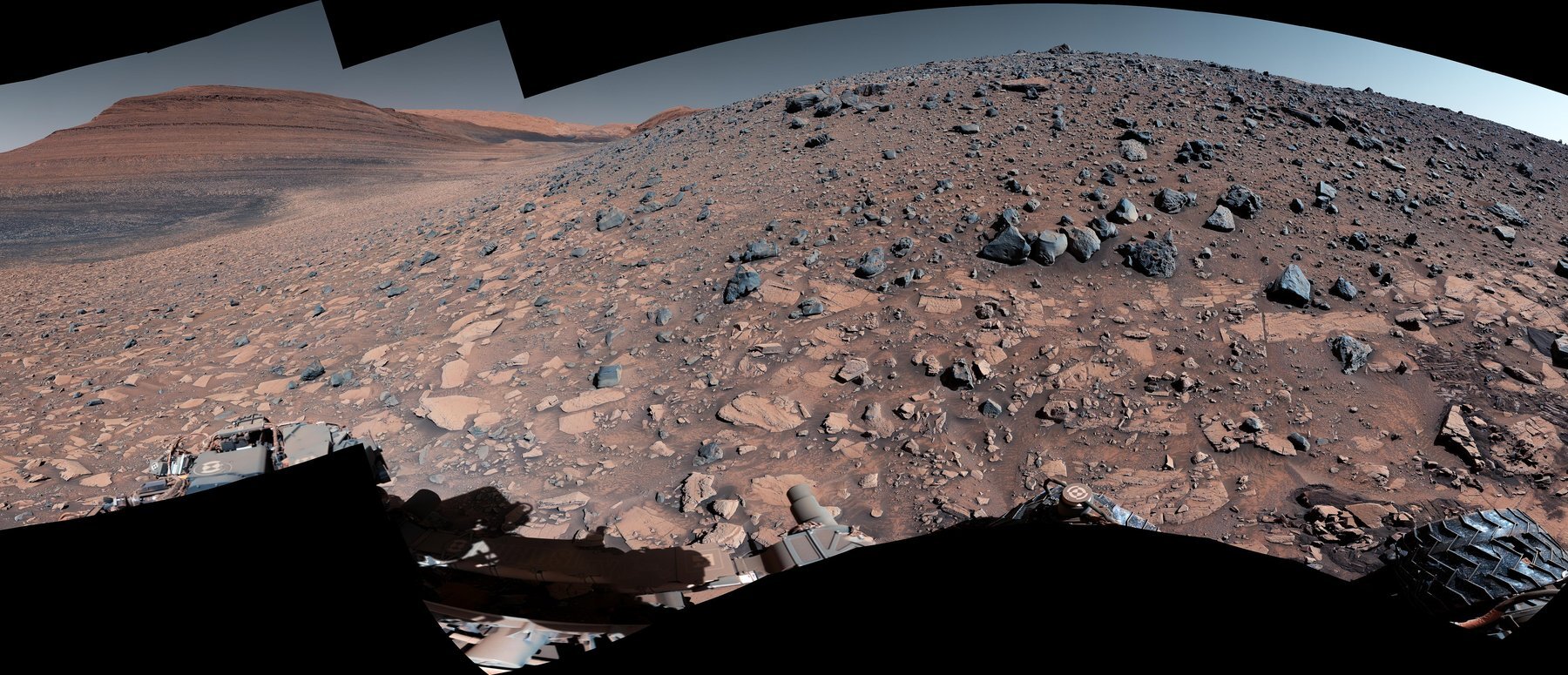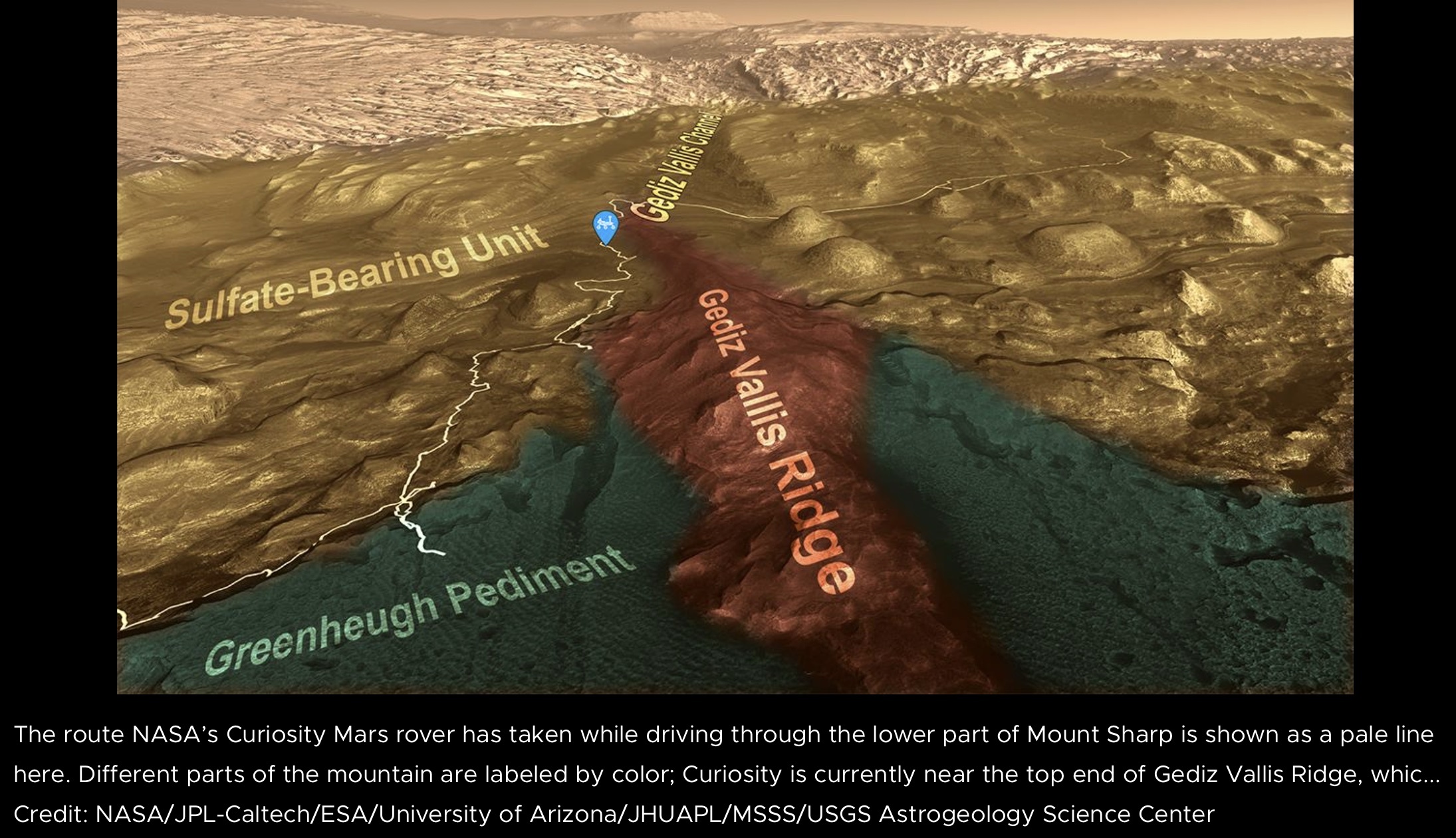20.09.2023

NASA’s Curiosity captured this 360-degree panorama while parked below Gediz Vallis Ridge (seen at right), a formation that preserves a record of one of the last wet periods seen on this part of Mars. After previous attempts, the rover finally reached the ridge on its fourth try.
Credit: NASA/JPL-Caltech/MSSS
Believed to be a remnant of powerful ancient debris flows, Gediz Vallis Ridge is a destination long sought by the rover’s science team.
Three billion years ago, amid one of the last wet periods on Mars, powerful debris flows carried mud and boulders down the side of a hulking mountain. The debris spread into a fan that was later eroded by wind into a towering ridge, preserving an intriguing record of the Red Planet’s watery past.
Now, after three attempts, NASA’s Curiosity Mars rover has reached the ridge, capturing the formation in a 360-degree panoramic mosaic. Previous forays were stymied by knife-edged “gator-back” rocks and too-steep slopes. Following one of the most difficult climbs the mission has ever faced, Curiosity arrived Aug. 14 at an area where it could study the long-sought ridge with its 7-foot (2-meter) robotic arm.
“After three years, we finally found a spot where Mars allowed Curiosity to safely access the steep ridge,” said Ashwin Vasavada, Curiosity’s project scientist at NASA’s Jet Propulsion Laboratory in Southern California. “It’s a thrill to be able to reach out and touch rocks that were transported from places high up on Mount Sharp that we’ll never be able to visit with Curiosity.”
The rover has been ascending the lower part of 3-mile-tall (5-kilometer-tall) Mount Sharp since 2014, discovering evidence of ancient lakes and streams along the way. Different layers of the mountain represent different eras of Martian history. As Curiosity ascends, scientists learn more about how the landscape changed over time. Gediz Vallis Ridge was among the last features on the mountain to form, making it one of the youngest geological time capsules Curiosity will see.
Rare Peek
The rover spent 11 days at the ridge, busily snapping photos and studying the composition of dark rocks that clearly originated elsewhere on the mountain. The debris flows that helped form Gediz Vallis Ridge carried these rocks – and others lower on the ridgeline, some as large as cars – down from layers high on Mount Sharp. These rocks provide a rare insight into material from the upper mountain that Curiosity can examine.

The rover’s arrival at the ridge has also provided scientists the first up-close views of the eroded remnants of a geologic feature known as a debris flow fan, where debris flowing down the slope spreads out into a fan shape. Debris flow fans are common on both Mars and Earth, but scientists are still learning how they form.
“I can’t imagine what it would have been like to witness these events,” said geologist William Dietrich, a mission team member at the University of California, Berkeley, who has helped lead Curiosity’s study of the ridge. “Huge rocks were ripped out of the mountain high above, rushed downhill, and spread out into a fan below. The results of this campaign will push us to better explain such events not just on Mars, but even on Earth, where they are a natural hazard.”
On Aug. 19, the rover’s Mastcam captured 136 images of a scene at Gediz Vallis Ridge that, when pieced together into a mosaic, provide a 360-degree view of the surrounding area. Visible in that panorama is the path Curiosity took up the mountainside, including through “Marker Band Valley,” where evidence of an ancient lake was discovered.
While scientists are still poring over the imagery and data from Gediz Vallis Ridge, Curiosity has already turned to its next challenge: finding a path to the channel above the ridge so that scientists can learn more about how and where water once flowed down Mount Sharp.
Quelle: NASA
